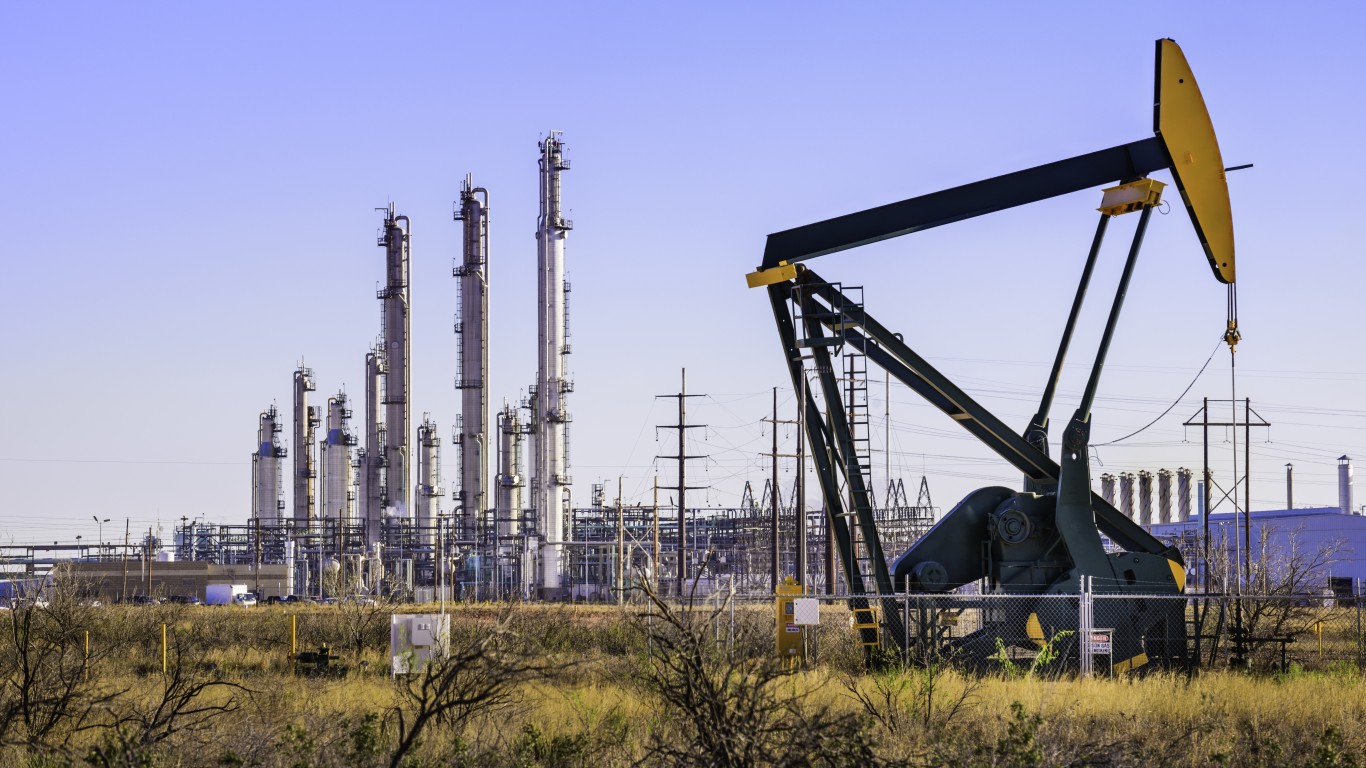Energy
Can Exxon Mobil and Chevron Earnings Escape the Oil Trap?

Published:
Last Updated:

At the end of the third quarter, West Texas Intermediate crude oil traded at around $73 a barrel, a year-to-date increase of about 25%. The two U.S. supermajor integrated oil companies, Exxon Mobil Corp. (NYSE: XOM) and Chevron Corp. (NYSE: CVX) traded down 1.0% and 4.8%, respectively.
Both supermajors are scheduled to announce earnings in two weeks and their run-up to that date has not been particularly awesome.
Exxon has announced major discoveries off the coast of Guyana this quarter, adding 4 billion barrels to the company’s estimated total resource base (not to proved reserves). The company has two platform projects in the pipeline to begin extracting the crude, one moving into position later this month and the other early next year.
Chevron has adopted a different approach. In late September the company said it is transferring a 20% stake in a North Sea project on the Norwegian Continental Shelf to Norway’s DNO. Earlier in the month, Chevron sold a 40% stake in another North Sea project to Norway’s Equinor. The company has said it plans to focus on its North American shale assets and the massive Tengiz field in the Caspian Sea.
Both Chevron and Exxon benefited from rising crude oil prices and rising production in the second quarter. After some bouncing around, third-quarter prices remained strong and production probably will improve slightly again.
The issue going forward is how these two giants react to the current turmoil in crude markets resulting from U.S. tensions with Saudi Arabia. The Saudis have said that OPEC and its non-OPEC partners, including Russia, would pump an additional 1 million barrels a day to offset supply losses caused by the reimposition of sanctions against Iran.
According to an exclusive report from Reuters Friday morning, the cartel is struggling to meet its promise. An internal OPEC document reviewed by Reuters indicates that the cartel’s production rose by 428,000 barrels a day between May and September, excluding barrels produced by Nigeria, Libya and Congo.
If OPEC cannot add enough barrels to offset declines from Iran and Venezuela, crude prices will rise unless demand also falls. U.S. producers in the Permian Basin are constrained by a lack of pipeline takeaway capacity, a situation that is not expected to be fully cleared up until next summer or even later in the year.
Natural gas and liquefied natural gas (LNG) may help smooth revenues out some for both companies. Exxon is the largest domestic producer of natural gas, and speculators are placing a big bet on higher prices. Long futures and options natural gas contracts outnumber shorts by about five to one, and natural gas stockpiles are more than 16% below their five-year average levels.
Chevron’s two massive LNG projects offshore of Northwest Australia — Gorgon and Wheatstone — produced 282,000 barrels of oil equivalent per day in the second quarter, and that total should continue rising.
The trap, as always for big producers like Exxon and Chevron is keeping costs under control and being able to move quickly to take advantage of changes in the market. Chevron has a better track record at this, but Exxon has been making up ground.
But for investors, the issue is whether at their current low prices these two giants value stocks or value traps. Chevron’s forward price/earnings ratio is 12.19 and Exxon’s is 14.08. Most analysts (16 of 25) rate Exxon a Buy or a Strong Buy; 16 of 24 place similar ratings on Chevron.
After poor starts Friday morning, both Chevron and Exxon, are closed with modest gains. Chevron has recovered from an opening-bell low of $117.37 to close Friday up about 0.6% at $118.14. The stock’s 52-week range is $108.02 to $133.88 and the 12-month price target is $146.23.
Exxon came off its early low of $81.51 to close Friday up about 0.2% at $81.97. The stock’s 52-week range is $72.16 to $89.30 and the 12-month price target is $89.69.
After two decades of reviewing financial products I haven’t seen anything like this. Credit card companies are at war, handing out free rewards and benefits to win the best customers.
A good cash back card can be worth thousands of dollars a year in free money, not to mention other perks like travel, insurance, and access to fancy lounges.
Our top pick today pays up to 5% cash back, a $200 bonus on top, and $0 annual fee. Click here to apply before they stop offering rewards this generous.
Flywheel Publishing has partnered with CardRatings for our coverage of credit card products. Flywheel Publishing and CardRatings may receive a commission from card issuers.
Thank you for reading! Have some feedback for us?
Contact the 24/7 Wall St. editorial team.